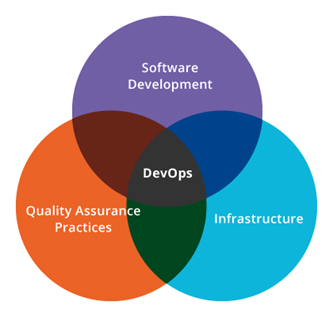'Dizer's DevOps team applies innovative technology, frameworks, and best practices to help the customers'.

Build your DevOps solution with us
At Dizer, we know how to drive your costs down and significantly shorten time-to-market, as well as increase your IT responsiveness and business agility through proven DevOps practices and methodologies. Leverage our extensive expertise to accelerate and automate your SDLC process.
DevOps
Dizer’s DevOps services help our customers accelerate the software development process, speed up time-to-market and increase flexibility, responsiveness, and productivity, while optimizing the cost of development and test processes. Reliable Release Management and Continuous Delivery Process enable predictive solutions for Cloud or private datacentres to be developed that are responsive to the changing needs of businesses.
Our DevOps team applies innovative technology, frameworks, and best practices to help our customers overcome the following challenges: manual deployment, limited scalability, broken SLAs (Service Level Agreements), lack of operational efficiency or service continuity, and disintegrated deployments.

Our DevOps services include proven methodologies to provide our clients with multiple benefits:
Accelerated Development Process. Release management automation allows the development team to become much more productive: DevOps starts with continuous integration, automatic deployment to development, QA, and staging environments, and results in an accelerated, more efficient and less risky application development process.
Business transformation. After building an application and putting it into production, the DevOps team monitor functionality, metrics and statistics to ensure SLAs are met: they constantly deploy the application, optimize the infrastructure, automatically scale, ensure security, and execute appropriate backup and disaster recovery tools.
Automation of all processes, in conjunction with continuous integration and continuous delivery.
Increased velocity and business agility of development teams through standardization and automation of the SDLC (Software Development Lifecycle) and continuous feedback from all stakeholders.
Optimized efficiency and lowered costs for the client’s production environment and operational activity through: automated release, provisioning, service availability, monitoring, remediation, maintenance and operation, continuous improvement, utilizing the latest technologies to improve maintainability, scalability, etc.
Dizer will ensure that “agile practices” apply to your databases, similar to how they apply to application development, through the implementation of critical processes and technology, thus allowing you to effectively and efficiently manage the flow of your information system’s data with a comprehensive database lifecycle management approach.
- Rapid Database Deployment: Our experts help your databases maintain effective source control to ensure rapid deployment and subsequent deployment automation.
- Continuous Delivery & 24/7 Support: With Dizer, your DevOps can be set up and optimized for continuous database deployment, supported by regular database assessment, monitoring, and tuning. When necessary, we offer 24×7 DBA coverage to support all activities from Dev to Ops, providing alignment and accountability.
- Instrumentation: Dizer works closely with your development team to ensure proper instrumentation of critical components that enable an effective monitoring solution. With deployments moving from monthly to weekly to daily to hourly, we ensure automated monitoring is able to detect abnormal behavior.
- Automation: We approach DevOps for databases with cost reduction in mind. We work within your environment using infrastructure tools to increase automation in performing software releases, regression testing, and test data management.
- Test Data Management: Automated testing is a cornerstone of Continuous Deployment and test data must be meticulously managed. Our DevOps DBAs will manage “golden copies” of test data as well as perform routine refreshes to non-production environments with production data in order to keep test environment relevant and efficient.
- Database Source Control: Dizer will help you “think like a developer” by implementing version control processes to streamline iteration.
- Database Processes and Tools: Dizer will help you develop the processes and scripts, as well as utilize the tools you need to allow for less variance in systems, increased consistency, and ultimately allow for rapid iteration and deployment with no downtime.
- Data Replication: Dizer vail can help you achieve DevOps by approaching hardware as disposable assets while ensuring that data remains consistent and available.
 Oracle Practice
Oracle Practice DevOps
DevOps Quality Testing
Quality Testing Staff Augmentation
Staff Augmentation Application Development
Application Development Mobility
Mobility Insurance Verticals
Insurance Verticals IT Infrastructure
IT Infrastructure Hosted PBX/IP Telephony
Hosted PBX/IP Telephony